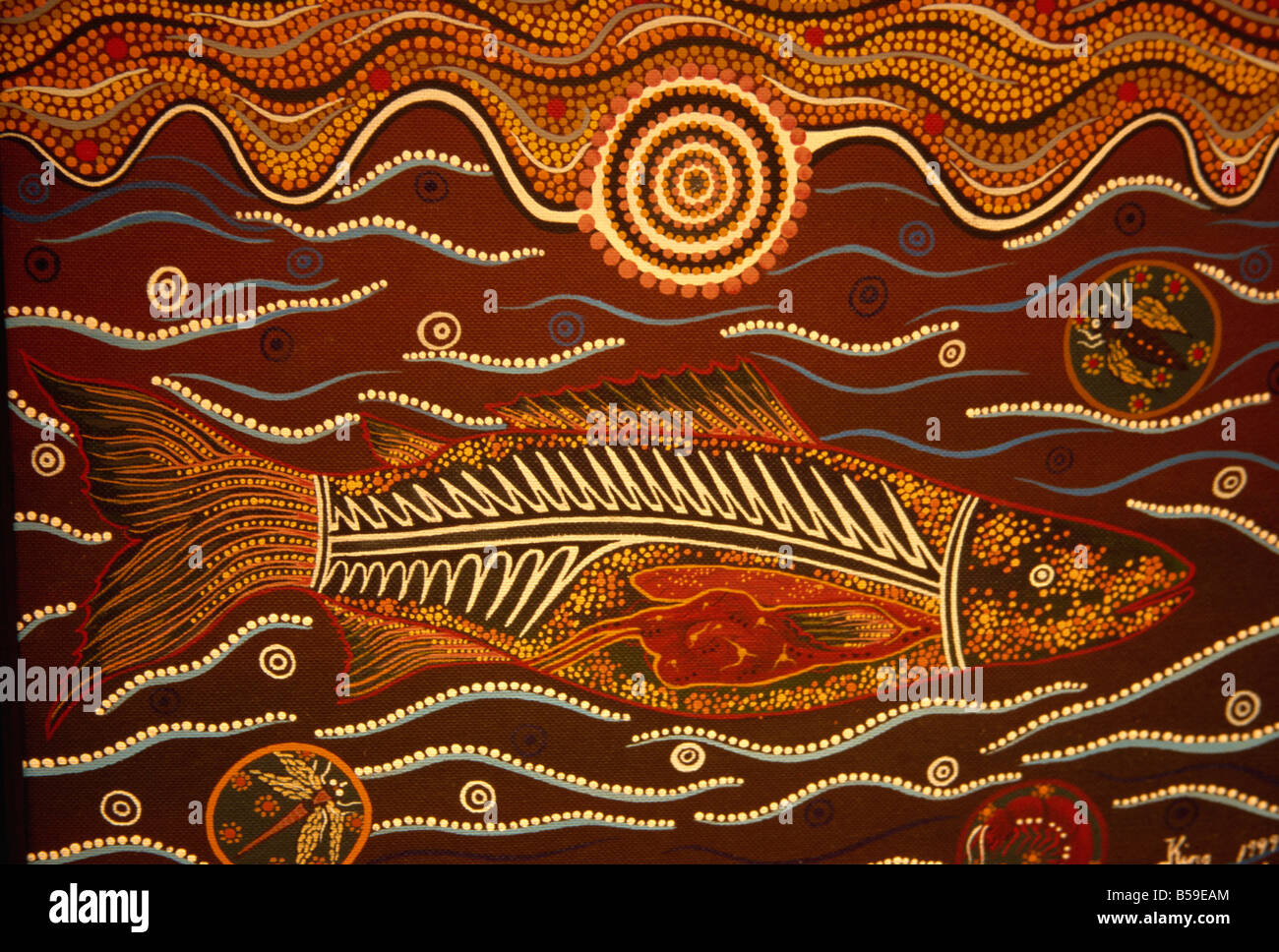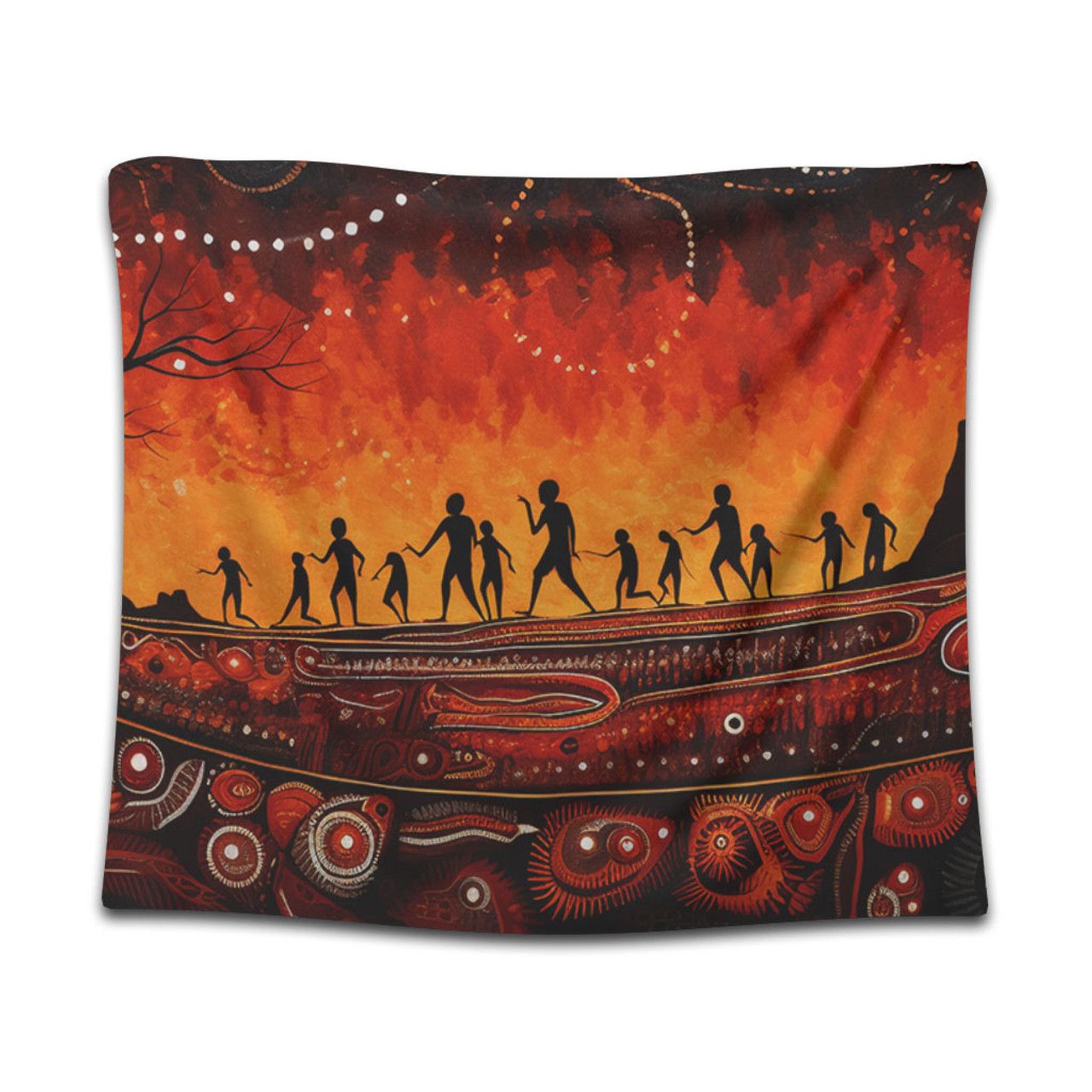The Dreamtime: A Timeless Tapestry of Aboriginal Culture
The Dreamtime: A Timeless Tapestry of Aboriginal Culture

The Dreamtime, also known as the Dreaming, is a fundamental concept in Aboriginal Australian culture, encompassing a vast and intricate tapestry of beliefs, stories, and traditions that have shaped the lives and understanding of Aboriginal people for millennia. It is more than just a historical narrative or a collection of myths; it is a living, breathing reality that permeates every aspect of Aboriginal life, from their connection to the land to their social structures and artistic expressions.
A Journey Through Time and Space:
Related Articles: The Dreamtime: A Timeless Tapestry of Aboriginal Culture
- Unveiling The Power Of Aboriginal Face Masks: A Journey Through Art, Ceremony, And Cultural Significance
- Unveiling The Power And Beauty: A Journey Into Aboriginal Face Masks Of Australia
- A Taste Of Paradise: Exploring The Diverse And Delicious Fruits Of Australia
- A Taste Of Paradise: Exploring The Diverse And Delicious Fruits Of Australia
- The Buzz About Bees: Why These Tiny Creatures Are Essential To Our Ecosystem
The Dreamtime is not a specific point in time but rather a timeless realm, existing outside the boundaries of our linear understanding of history. It is a realm where the ancestral beings, known as the "Dreamtime Ancestors," created the land, the animals, and the people. These beings, in their journeys across the land, shaped its features, leaving behind their footprints, tracks, and stories etched into the very fabric of the landscape.
The Dreamtime narratives, passed down through generations through oral traditions, are not just stories but living histories. They are a map of the land, a guide to its resources, and a blueprint for social relationships. Each rock formation, river, and animal holds a story, a reminder of the Ancestors’ actions and the lessons they imparted.
The Interwoven Threads of Creation:
The Dreamtime is not merely about creation; it is also about ongoing creation. It is a dynamic force that continues to shape the present and influence the future. Through rituals and ceremonies, Aboriginal people connect with the Dreamtime, seeking guidance and strength from the Ancestors. These ceremonies are not mere performances but acts of remembrance and renewal, reaffirming their connection to the land and their place within the grand tapestry of creation.
The Land as a Living Canvas:
The Dreamtime is deeply embedded in the Australian landscape. Aboriginal people see the land not as a passive resource but as a living entity, imbued with the spirit of the Ancestors. The land is a sacred space, a repository of stories and knowledge, and a source of sustenance and spiritual nourishment.
This profound connection to the land is reflected in Aboriginal art. Rock paintings, sculptures, and other forms of artistic expression depict Dreamtime narratives, capturing the essence of the Ancestors’ journeys and the stories they left behind. These works are not merely decorative; they are tangible expressions of the Dreamtime, a way to connect with the past and to honor the Ancestors’ legacy.
The Importance of the Dreamtime:

Understanding the Dreamtime is crucial for comprehending Aboriginal culture and its profound impact on their lives. It provides a framework for understanding their relationship with the land, their social structures, their artistic expressions, and their spiritual beliefs.
Here are some key reasons why the Dreamtime is so important:
- Connection to the Land: The Dreamtime provides a profound understanding of the land and its significance. It teaches respect for the environment, a sense of responsibility for its well-being, and a deep connection to its spiritual essence.
- Social Structure: The Dreamtime narratives define social roles, responsibilities, and relationships within Aboriginal communities. They provide a framework for understanding kinship, law, and social order.
- Spiritual Beliefs: The Dreamtime is the foundation of Aboriginal spirituality. It offers a framework for understanding the world, its creation, and its purpose. It provides a sense of belonging, connection, and purpose in life.
- Artistic Expression: The Dreamtime is a source of inspiration for Aboriginal art, music, and dance. These forms of expression are not merely aesthetic but are deeply intertwined with the Dreamtime narratives, preserving and transmitting knowledge and cultural identity.
- Resilience and Identity: The Dreamtime has been a source of strength and resilience for Aboriginal people, helping them to navigate the challenges of colonization and maintain their cultural identity.

The Dreamtime: A Legacy for the Future:

The Dreamtime is not a relic of the past; it is a living tradition that continues to evolve and inspire Aboriginal communities today. It is a powerful force that shapes their identity, their values, and their aspirations. As the world increasingly recognizes the importance of cultural diversity and the need to protect indigenous knowledge, the Dreamtime stands as a testament to the enduring power of storytelling, the profound connection between humans and the natural world, and the importance of preserving cultural traditions for future generations.
FAQ: Why is the Dreamtime Important?
Q: What is the Dreamtime?
A: The Dreamtime, also known as the Dreaming, is a concept central to Aboriginal Australian culture. It encompasses a vast and intricate tapestry of beliefs, stories, and traditions that have shaped the lives and understanding of Aboriginal people for millennia. It is a timeless realm where the ancestral beings, known as the "Dreamtime Ancestors," created the land, the animals, and the people.
Q: Why is the Dreamtime important to Aboriginal people?
A: The Dreamtime is a vital part of Aboriginal culture, providing a framework for understanding their relationship with the land, their social structures, their artistic expressions, and their spiritual beliefs. It is a source of strength, resilience, and identity for Aboriginal communities.
Q: What are some examples of how the Dreamtime is reflected in Aboriginal culture?
A: The Dreamtime is reflected in various aspects of Aboriginal culture, including:
- Stories: The Dreamtime narratives are passed down through generations through oral traditions, providing a map of the land, a guide to its resources, and a blueprint for social relationships.
- Art: Rock paintings, sculptures, and other forms of artistic expression depict Dreamtime narratives, capturing the essence of the Ancestors’ journeys and the stories they left behind.
- Ceremonies: Rituals and ceremonies connect Aboriginal people with the Dreamtime, seeking guidance and strength from the Ancestors.
- Social Structures: The Dreamtime narratives define social roles, responsibilities, and relationships within Aboriginal communities.
Q: How is the Dreamtime relevant today?
A: The Dreamtime is not a relic of the past; it is a living tradition that continues to evolve and inspire Aboriginal communities today. It is a powerful force that shapes their identity, their values, and their aspirations.
Q: What can we learn from the Dreamtime?
A: The Dreamtime offers valuable lessons about the importance of:
- Connection to the land: Recognizing the land as a living entity and respecting its spiritual essence.
- Cultural diversity: Appreciating the unique perspectives and traditions of different cultures.
- Storytelling: Using stories to preserve knowledge, transmit cultural identity, and foster understanding.
- Resilience: Drawing strength from tradition and cultural heritage to navigate challenges and maintain identity.
Q: How can we support the preservation of the Dreamtime?
A: We can support the preservation of the Dreamtime by:
- Learning about Aboriginal culture: Seeking out information, attending cultural events, and engaging with Aboriginal communities.
- Respecting Aboriginal land: Recognizing the sacredness of the land and supporting efforts to protect it.
- Supporting Aboriginal artists: Appreciating and promoting Aboriginal art and cultural expressions.
- Advocating for Aboriginal rights: Supporting initiatives that promote Aboriginal self-determination and cultural preservation.
The Dreamtime is a testament to the power of storytelling, the enduring strength of cultural traditions, and the profound connection between humans and the natural world. It is a legacy that continues to inspire and shape the lives of Aboriginal people today and will continue to do so for generations to come.
Closure
Thus, we hope this article has provided valuable insights into The Dreamtime: A Timeless Tapestry of Aboriginal Culture. We hope you find this article informative and beneficial. See you in our next article!


